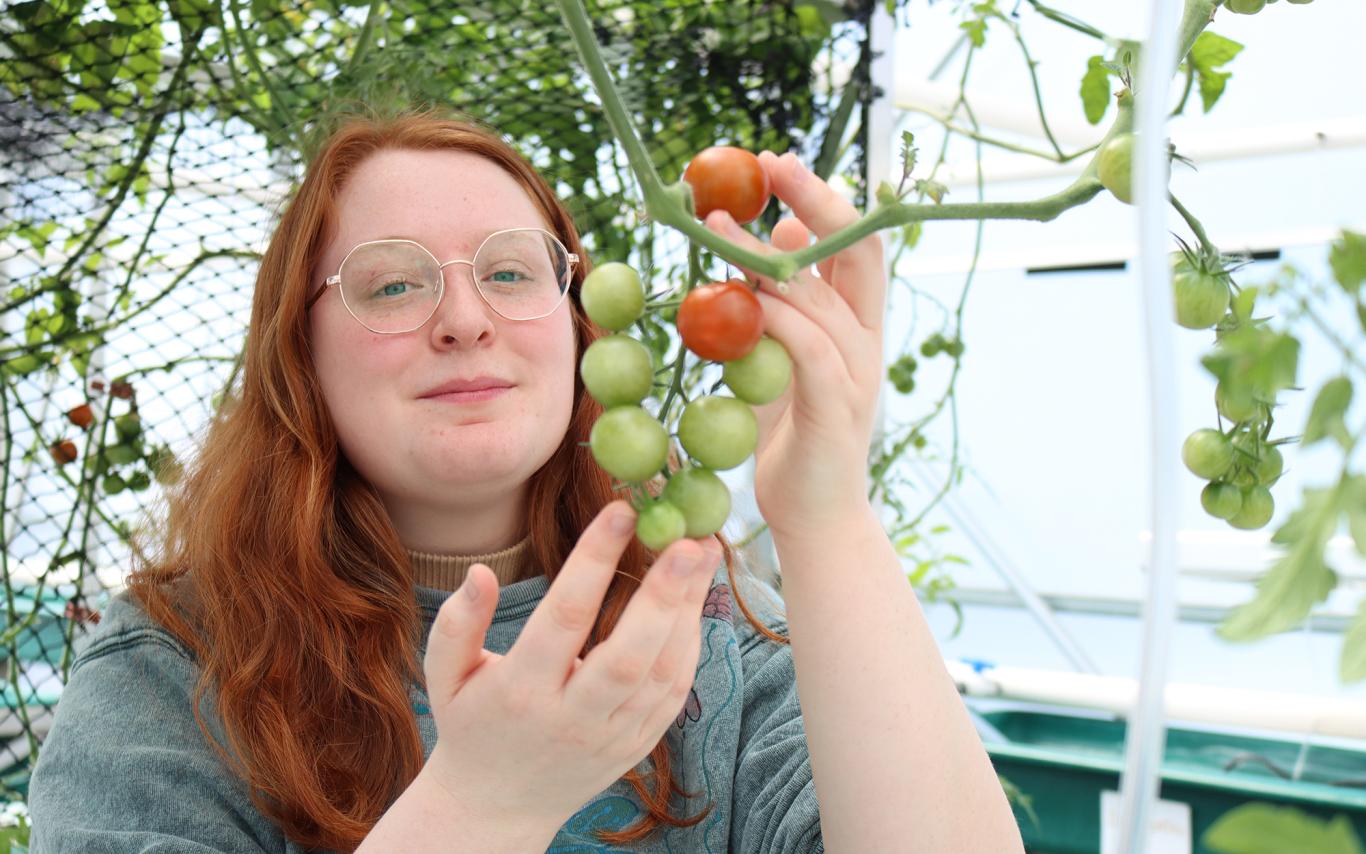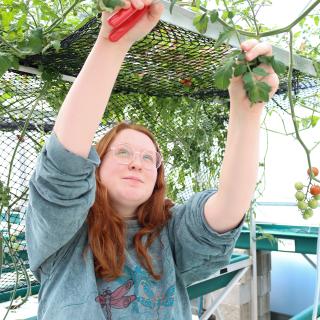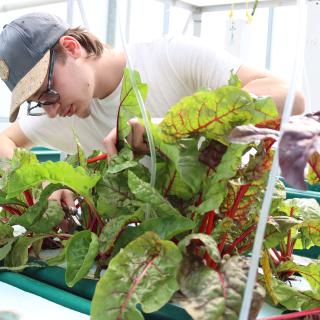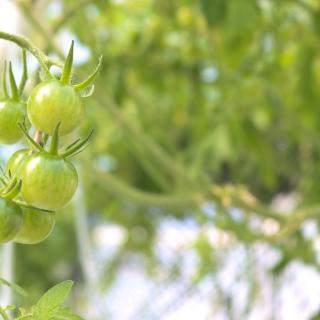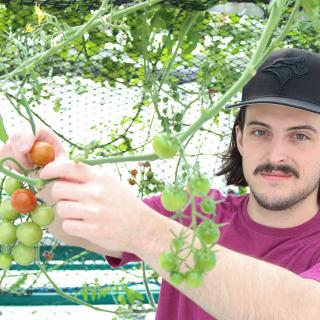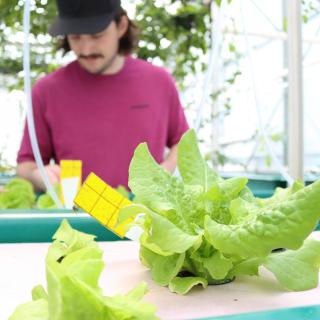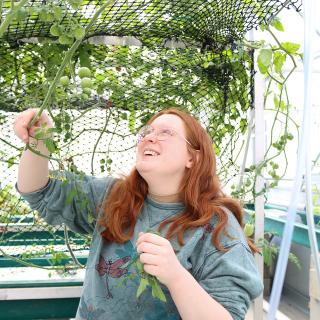Students learn about sustainable food production
VIU students are growing their knowledge – and vegetables – in VIU’s aquaponics greenhouse.
While students aren’t getting their hands dirty because the greenhouse doesn’t use dirt, they are getting hands-on learning. Fisheries and Aquaculture Technology diploma students study in the greenhouse as part of their program.
“It’s cool learning all the different techniques from pest management to nutrients and how you’re feeding the system. There is so much to it,” says Tyler Worthing.
The greenhouse uses a soilless growing system. There is a constant flow of water that cycles through pipes, bringing nutrients to plant roots. The water gets recycled and recirculated through the system. Aquaponics is a more sustainable growing method than traditional agriculture as it uses less water and has a smaller growing footprint. Plants are grown in substrate cups, which help support the roots and improve moisture retention. The greenhouse uses fish waste to feed the plants. Next year the program hopes to use freshwater crayfish in the system.
“Learning about alternative ways of producing food is critical for our future, particularly in Canada,” says Dr. Dan Baker, one of the team associated with this experiential course. “Aquaponics and other urban growing methods are likely to be tremendously important for food security in high density cities and remote towns and was clearly illustrated by vulnerability of supply chains during the pandemic.”
Nicole Darlington wants to set up her own backyard system in the future.
“I’ve always been interested in marine biology. This program is adjacent to that and it was a two-year diploma program so I thought I should try it out and I ended up really enjoying it,” says Nicole. “It’s important to learn how to manage resources that come from the ocean.”
Students working in the greenhouse gain an understanding of:
- water quality monitoring and control,
- greenhouse functions,
- hydrology,
- food safety and handling, and
- how to operate a food production system.
